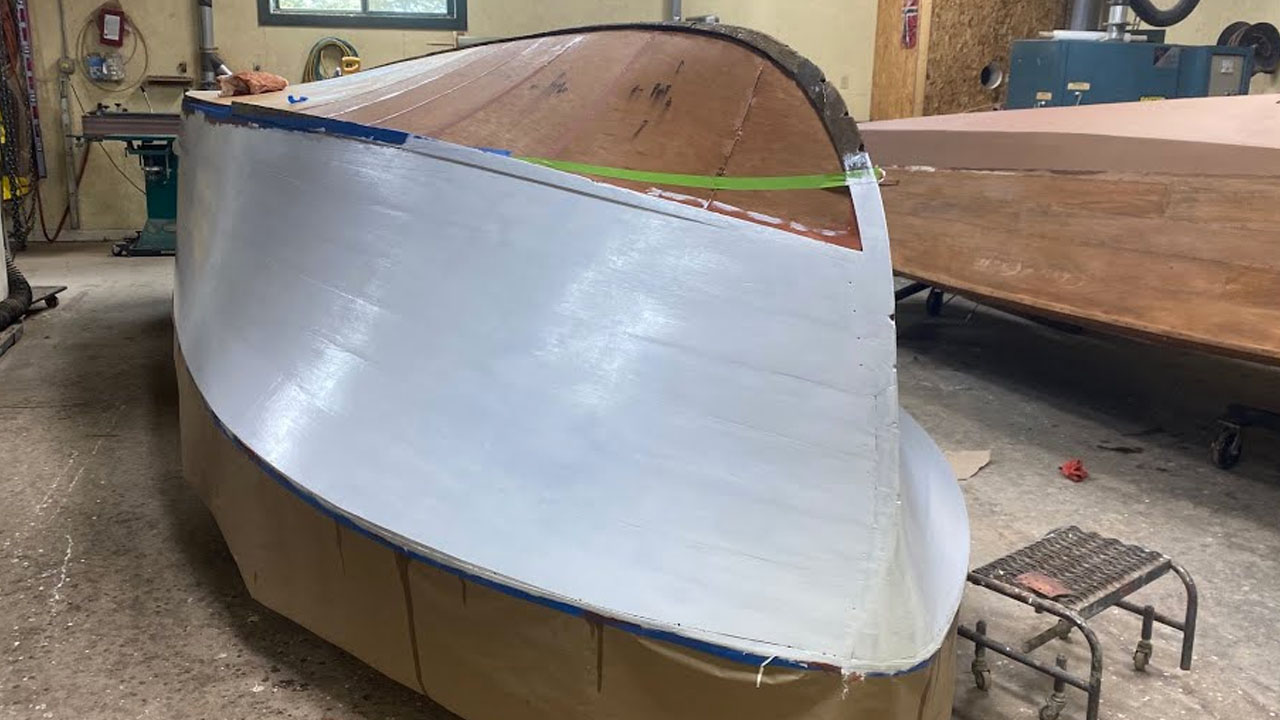We re-opened, well sort of opened, this morning. The doors remain locked. Each of us is masked and gloved, and working in a separate room. At least the crew can complain together about sagging paint, cranky bolts that break and bead blasting in our outdoor shack at 37 F! Stay safe! After a final sanding of the Pettit Tie Coat Primer, and a first coat of topcoat applied on Saturday, I am applying the second base coat of semi-gloss white Interlux Premium Yacht Enamel on the topsides of our 1947 Cedar-planked U22.
I am rolling the paint on with an Arroworthy Mighty Mini 4” foam roller, and then tipping it immediately with a 3” foamy, the end of which I keep full of paint.
Why such a short roller, and why this one? We’ve tried 7” yellow foam roller covers, but the fit is terrible with surfaces like a wood boat’s topsides. The ends of the cover tend to leave tracks of extra paint, which makes uniform application very challenging.
I like this roller because its domed foam outer end is great for teasing paint into spray-rail-topside joints as well as those between the topsides and chines.
I work two planks at a time, roll the paint on from one end of the bull to the other, tipping as I go. We will apply four base coats with sanding using 200 grit after the second and fourth coats. Doing so exposes the declivities, which will remain slightly glossy against the post-sanding matte finish elsewhere, and fill-and-fair them with 3M Marine Premium Filler.
Each faired spot will be primed with Pettit Tie Coat Primer and hand block sanded, and then two more coats will be rolled and tipped.
Next comes a final sanding with 220 or higher grit, after which any remaining declivities will be filled, faired, primed and spot painted.
After one more sanding pass, we will apply the final two coats, at which point her topsides will be truly stunning.

